2023 is (again) a year in which marketing teams have to tighten their belts. While the pressure on marketing teams continues to climb higher and higher, marketing budgets aren't climbing with them. The motto everywhere seems to be "do more with less". Gartner's Annual CMO survey shows that marketing budgets have dropped since last year, at 9.1% vs 9.5% last year, and we're still not back to that pre-pandemic level, when the marketing budget made up 11% of the total company revenue.
The global pandemic has influenced these tight budgets, and while the economy slowly recovers, nobody knows how long the pressure on marketing budgets will remain. This is a real problem considering the challenges marketers face:
- Creating more engaging content across multiple channels
- Staying compliant with regulations
- Maintaining brand consistency and authority
- Future-proofing processes against external disruptions
This is why marketers need solutions that will bring widespread benefits to their marketing efforts and maximize the return on investment. One such solutions is a distributed marketing platform. Gartner states that one area where marketing leaders are willing to invest on a tight budget is marketing technology. They are looking for ways technology can help them up their ROI by automating processes and taking over repetitive tasks, and a good platform can help them reach that goal.
We've taken 4 marketing challenges of 2023 and will show how a distributed marketing platform can make a big difference in solving them.
But first, a short recap on what distributed marketing is.
What is distributed marketing?
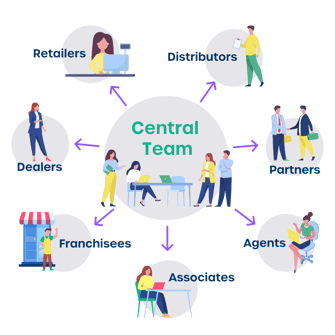 Distributed marketing is a business model in which organizations market their products or services from a central, corporate level to a network of local, distributed partners. These partners can be retailers, agents, regional teams or locations, etc. While it might sound like a niche model, 75% of global sales come from these indirect channels. Not surprising when you consider that distributed marketing allows brands to meet customers at a personal and local level which rallies engagement.
Distributed marketing is a business model in which organizations market their products or services from a central, corporate level to a network of local, distributed partners. These partners can be retailers, agents, regional teams or locations, etc. While it might sound like a niche model, 75% of global sales come from these indirect channels. Not surprising when you consider that distributed marketing allows brands to meet customers at a personal and local level which rallies engagement.
Chances are that your organization is using a distributed marketing model to at least some extent. So, how can we tackle the marketing challenges of 2023 with a distributed marketing platform?
1. The ever-growing need for content
One of the biggest overheads for marketing teams is content production, and it will remain that way in the coming years. With the number of channels ever-increasing, taking full advantage of these requires a great deal of time and resources.

Short-form videos, podcasts, live streaming content, and stories remain especially popular. These types of content are very time-intensive to create, putting an even bigger pressure on marketing teams’ workload.
With budgets shrinking, it’s hard to deliver a consistent level of output and quality. This can result in less or poor quality content, brilliant content ideas that never make it off the shelf, a limited number of channels utilized, and other projects or activities that are put on hold due to reallocating staff and budget.
The fact that the amount of work taken on by external agencies is lessening as many companies choose to bring work in-house, leading to an even higher workload for those teams. In short, a situation that will definitely cause headaches and sleepless nights. Luckily, a distributed marketing platform can make a difference.
Ramp up content production
Although it may seem contradictory, a distributed marketing tool boosts content production efficiency while simultaneously brining the process in-house. It does so by making marketing a team effort. Everyone in your organization can create high-quality, on-brand content for all channels without any design skills or experience. Ads, videos, social posts, business cards, you name it. How?

By using dynamic templates that can instantly be adapted to almost everything (markets, audiences, languages, size requirements, etc.). These templates can be as open or locked in as needed to avoid content that doesn’t follow brand guidelines, no matter who created it. You can also choose to automate (parts of) the content creation process by auto-importing relevant data or imagery into individual or team templates, saving everybody a lot of precious time and reducing the risk of errors. It’s also possible to work with pre-programmed sections such as ‘choose one of three headlines, designs or images”.
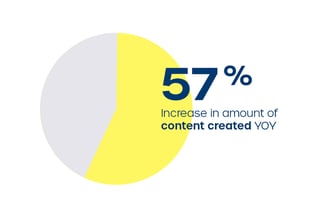 Templates shrink the time, effort, and cost involved in content production, making them very valuable when dealing with tight budgets. One of our Marvia users, a franchiser with over 300 stores, saved $156.000 and 1.700 hours a year on creating flyers alone and saw a 57% increase in content created YoY. All that time and budget can be invested in strategic projects rather than in routine production.
Templates shrink the time, effort, and cost involved in content production, making them very valuable when dealing with tight budgets. One of our Marvia users, a franchiser with over 300 stores, saved $156.000 and 1.700 hours a year on creating flyers alone and saw a 57% increase in content created YoY. All that time and budget can be invested in strategic projects rather than in routine production.
2. Maintaining a strong brand image
While advertising will remain an important pillar of your marketing strategy, it will continue to become more expensive as online advertising competition increases. Research also shows that trust in businesses is eroding, and most customers don’t trust advertisements (65%) and sponsored social media ads (71%) anymore.
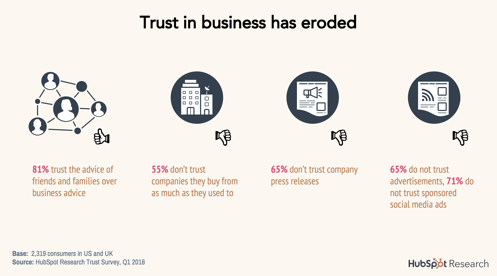
This anti-advertising movement is expected to gain more momentum in 2023. With third-party cookies also being put on the chopping block, branding becomes more important than ever. A strong brand has many benefits, such as higher customer loyalty, lower price sensitivity, and more word of mouth.
Maintaining a consistent brand across large organizations is a challenge, though. As an organization grows and becomes more geographically and structurally diverse, the brand often becomes fragmented. Brand erosion, reduced sales, and legal risks are just some examples of ways in which a fragmented brand can negatively impact both revenue and expenses.
Control your Brand
Distributed Marketing platforms can make a crucial difference in how much time and resources you need to devote to maintaining a strong brand.
- It provides a central, online repository (DAM) to house all your brand assets and documents, which can easily be shared with internal and external stakeholders.
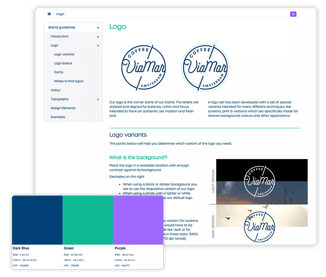 It centralizes your brand guidelines in a digital, interactive handbook that always contains the most up-to-date information on your brand and brand strategy.
It centralizes your brand guidelines in a digital, interactive handbook that always contains the most up-to-date information on your brand and brand strategy.- It keeps everyone in sync about campaigns and activities with a flexible marketing calendar. No more long email threads, static PDFs, or referring people to the right materials.
- It streamlines marketing requests and approvals with straightforward and efficient workflow tools can provide that extra governance layer without the back-and-forth emails and confusion about different versions.
3. Staying compliant with regulations

Rules and regulations aren’t going away; as a matter of fact, compliance and security requirements are more rigorous than ever. Marketeers working in highly controlled industries, such as financial services and healthcare, have to deal with additional protocols on how they can market to consumers. To make matters worse, regulations vary around the globe, making it even harder to keep tabs on local compliance for marketing teams.
Non-compliance isn’t just bad publicity for your brand; it can also have a huge financial impact on your business. For instance, alcohol companies in Ireland can receive a fine of €250.000 when they advertise within 200 meters of a school or a local authority playground. Ensuring and double-checking your compliance and regulations hinders your ability to go to market fast.
Comprehensive Compliance
Distributed Marketing platforms are perfect for making sure all your partners comply with local regulations. It does so by:
- Custom access permissions: assign roles and permissions to restrict users, departments, affiliates, and locations to only access and utilize content that is approved for them.
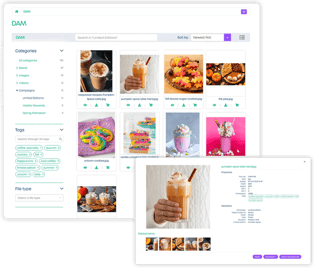 Asset repository: ensure each person is using pre-approved photos, videos, documents, and more that are stored in a central repository with easy-to-find search functionalities and licensing information.
Asset repository: ensure each person is using pre-approved photos, videos, documents, and more that are stored in a central repository with easy-to-find search functionalities and licensing information. - Workflows: add approval workflows for an extra layer of governance on content created, asset requests, or product orders.
4. Increasing Partner Participation
Since more than 75% of the world’s commerce goes through indirect sales, managing and supporting your partners is essential for business success. But although it is crucial, it’s not easy. The list of responsibilities is endless while time and resources are scarce. On top of that, only 15% of channel marketing efforts usually reach the end-user. That’s a lot of wasted time and money. Budget cuts and limited personnel will even further complicate things.

Forrester’s research also found that only 20% of partners deliver 80% of all sales; the other 80% are not doing as good of a job as they could. So how do you get the other 80% to participate?
Activate your Partners
You want your partners to see you as a collaborating partner working with them to achieve joint success. By facilitating and encouraging them in their marketing efforts, brands will develop closer relationships and achieve better results.
Distributed marketing platforms are built with partners in mind, giving them the tools and materials to succeed. It also relieves corporate marketing teams from micromanaging local partners. Some features that increase participation and involvement are:
- Shared Learning: let partners share best practices and related assets across departmental silos or different regions to ensure continuous improvement.
- 360˚ Campaign Distribution: a tool that takes the user through a step-by-step process, including all the appropriate assets, materials, and channels. Guarantee consistency while still providing options and flexibility for local customization.
- Event Packages: many marketing activities are repeated over and over again. With Packages, you have everything partners need to achieve rapid, repeatable and consistent results.
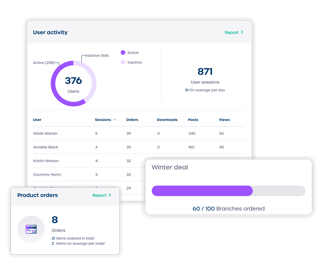
- Dashboarding: get rich insights on campaign participation and user activity and give attention to the partners that need it.
Overall, a distributed marketing platform translates into saved resources, less frustration among partners, increased sales, and better insights for the brand.
Take your brand further with Distributed Marketing
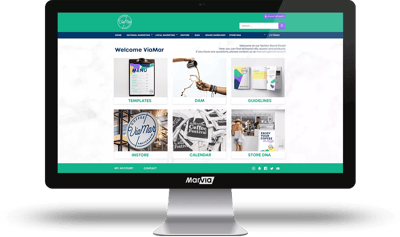
As we hopefully demonstrated, making a distributed marketing platform a priority for this (and next) year’s budgets will significantly impact your brand and marketing department.
To discover the incredible potential that Marvia’s platform offers and how it can enhance your distributed marketing efforts like never before, get in touch with one of our experts or book your free demo today.
-min.png?width=300&name=Ontwerp%20zonder%20titel%20(1)-min.png)
.png?width=512&height=317&name=Marketing%20Budget%20as%20a%20Percent%20of%20Total%20Revenue%20(2019-2023).png)